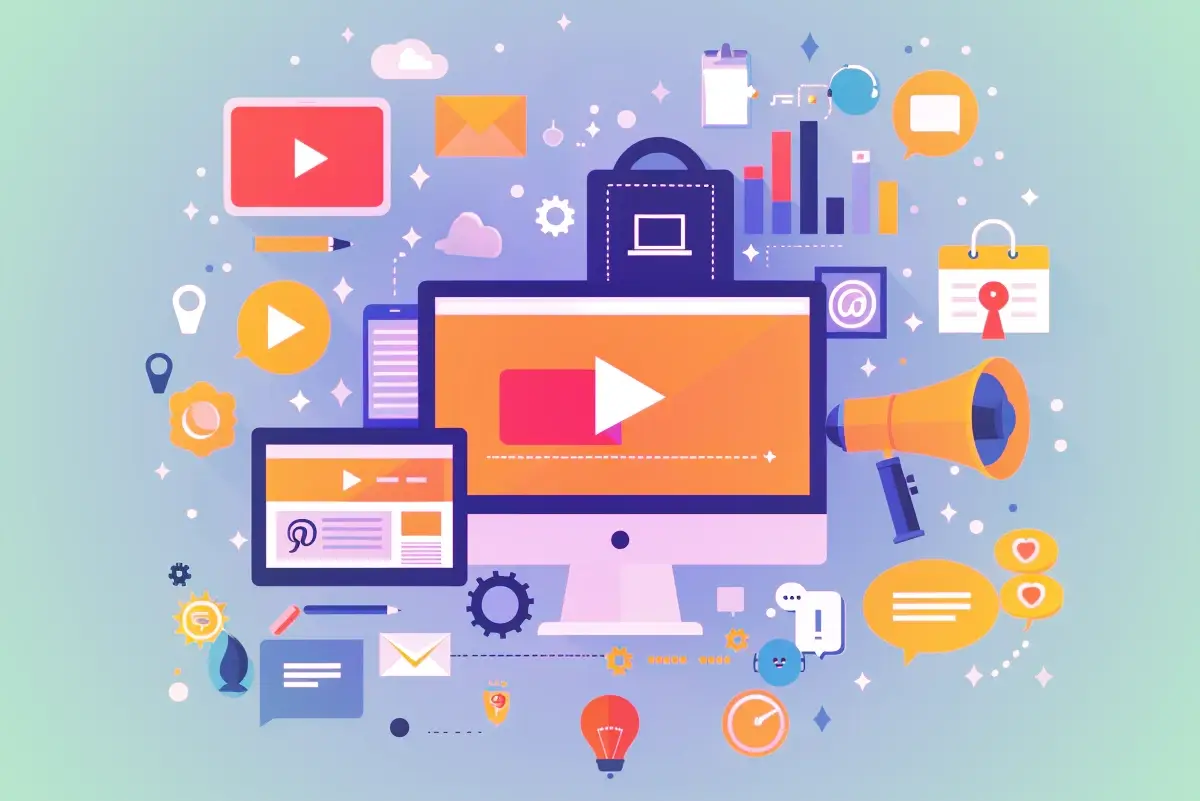Alex Hormozi is one of the best influencers in the space I have heard articulate business and marketing concepts. (If you haven’t read his books, they are worth it. Alex’s Books) After watching Alex Hormozi’s insights from his new YouTube video “13 Years of Marketing Lessons in 85 Minutes” I was inspired to summarize it into actionable strategies for my personal use and others. Let’s break down these lessons into concrete steps with practical examples to help us elevate our marketing game.
Actionable Marketing Strategies
Start with Low Prices or Free
Begin with low prices or free offers to gain initial traction. It’s easier to increase prices later than to decrease them. Example: Offer a free trial of your software or a free initial consultation for services to attract early adopters.
Build Trust and Value
Strategy: Provide your services for free initially to build trust, gather testimonials, and refine your product. Example: Offer free services to local businesses and collect testimonials for your website.
Iterative Pricing Strategy
Strategy: Increase prices incrementally after proving value with a batch of initial customers. Example: Start with a low introductory price and gradually raise it as you gain positive feedback and testimonials.
Volume Over Quality Initially
Strategy: Focus on producing a high volume of content or ads rather than perfecting each one to understand what works. Example: Post multiple times a day on social media to see which type of content resonates most with your audience
Scaling Paid Ads
Strategy: Understand that paid ads are an auction for attention—outbid competitors by making more money from each customer, allowing you to spend more on acquiring them. Example: Increase the value of your offerings with upsells and cross-sells to boost customer lifetime value (LTV).
Optimize Front-End First
Strategy: Focus on optimizing the initial parts of your funnel (e.g., headlines, hooks) for the most significant impact on conversion rates. Example: A/B test different headlines on your landing page to find the most effective one.
Measure LTV to CAC Ratio
Strategy: Focus on the Lifetime Value (LTV) to Customer Acquisition Cost (CAC) ratio to ensure sustainable growth. Example: Calculate your LTV and CAC regularly to ensure your marketing efforts are cost-effective.
Use Clear and Simple Language
Strategy: Ensure your messaging is clear and straightforward to make it accessible to everyone. Example: Use simple language in your marketing materials to ensure your message is easily understood.
Leverage Feedback and Testimonials
Strategy: Use initial free or discounted services to gather feedback and testimonials to refine your product and build credibility. Example: Collect customer testimonials and display them prominently on your website.
Volume Negates Luck
Strategy: Increase the volume of your marketing efforts to reduce reliance on luck. Example: Produce a high volume of both organic content and paid ads to increase your chances of success.
Maximize LTV to CAC Ratios
Strategy: Understand and optimize your LTV to CAC ratios to make informed decisions about scaling. Example: Implement a loyalty program to increase customer retention and lifetime value.
Use Gross Profit to Determine LTV
Strategy: Calculate your gross profit per customer to set realistic acquisition costs. Method: Divide total gross profit by the number of customers to get an average.
Ad Creation Process
Strategy: Continuously gather and analyze data to refine your ads. Steps: Collect data from various sources, analyze historical best-performing ads, and create new hooks based on proven success and new creative ideas.
Optimize and Test Ads
Strategy: Use a systematic approach to testing and refining ads, focusing heavily on the initial hooks. Example: Use A/B testing to compare different ad versions and optimize for the best performance.
Promotional Focus
Strategy: Dedicate significant time each day to promoting your business. Example: Spend the first four hours of each day on activities like cold outreach, content creation, or running ads.
Scaling Framework
Strategy: Follow a structured approach to scaling your business by focusing on one product, one avatar, and one channel before expanding. Steps: Nail it, then scale it by ensuring reliability and then adding more channels or products.
State Facts and Tell the Truth
Strategy: Track and present data accurately to build credibility and trust. Method: Implement data collection at multiple stages and continuously improve based on feedback.
Demonstrate Value
Strategy: Show potential customers the tangible benefits of your product or service. Example: Use live demonstrations or testimonials to provide a clear picture of the value.
Market Expansion Strategies
Strategy: Ensure you are fully exploiting your current market before expanding. Methods: Consider upmarket, downmarket, adjacent markets, narrowing the focus, or broader markets.
Narrow Your Focus to Scale
Strategy: Focus on a specific niche to become the best in that area. Example: Analyze your top 20% of customers to understand what they have in common and focus your marketing efforts on them.
Optimize Marketing to High-Value Customers
Strategy: Tailor your marketing and sales efforts to attract more of your most profitable customers. Example: Create targeted campaigns for your high-value customer segment.
Break Limiting Beliefs
Strategy: Challenge the notion that you need to expand your market to grow. Example: Focus on improving your current offerings and serving your existing market better.
Provide Real Value
Strategy: Make your offerings easier, faster, and more risk-free to increase their perceived value. Example: Offer a money-back guarantee or free trial period to reduce perceived risk.
Give Away the Secrets, Sell the Implementation
Strategy: Share valuable information freely to build trust and demonstrate your expertise, then sell the services or products that help implement that information. Example: Provide comprehensive guides or tools for free and offer personalized services to help implement these solutions.
High-Quality Free Content
Strategy: Ensure that your free content is as valuable as something people would pay for. Example: Create detailed and valuable blog posts or videos that solve specific problems.
All Advertising Works
Strategy: Every form of advertising can work if executed correctly. Example: Test different advertising platforms and methods to see what works best for your business.
Optimize from Back to Front
Strategy: Focus on maximizing the lifetime value of your customers to determine how much you can spend on acquiring new ones. Example: Implement strategies to increase the average order value and repeat purchase rate.
Levels of Awareness in Advertising
Strategy: Tailor your ads to address different levels of customer awareness. Example: Create different ad campaigns for prospects at various stages of the buying journey.
Reminders Over New Information
Strategy: People need to be reminded more often than they need to be taught something new. Consistently reinforce key messages to keep them at the top of your audience’s mind. Example: Regularly repost your most effective content to ensure new followers see it and existing followers are reminded of its importance.
Repetition is Key
Strategy: Regularly repeat your core messages because new audience members might not have heard them, and existing audience members benefit from reminders. Example: Use consistent messaging across all marketing channels to reinforce your brand’s key points.
Tell New Stories to Explain Old Concepts
Strategy: Use different stories and examples to explain the same core concepts to reach different segments of your audience. Example: Share customer success stories that highlight how your product solved various problems.
Use Various Formats and Contexts
Strategy: Present the same ideas in different formats (written, audio, video, etc.) and contexts to reinforce the message and reach a wider audience. Example: Convert your blog posts into podcasts and videos to cater to different preferences.
Volume of Content
Strategy: Produce a large volume of content to increase the chances of reaching your audience. Most people won’t see everything you put out, so more content increases visibility. Example: Post daily on social media and maintain a blog to ensure a constant stream of content.
The Mission of Providing Value
Strategy: Focus on making real business education accessible for everyone. Share your knowledge freely to help others and build your brand. Example: Offer free webinars and downloadable resources to educate your audience.
Conclusion
Alex Hormozi’s marketing lessons provide a comprehensive framework for creating and scaling effective marketing strategies. By focusing on building trust, iterating your approach, and maximizing the lifetime value of your customers, you can create sustainable growth and a loyal customer base. Remember to continuously produce valuable content, leverage customer feedback, and optimize your messaging for clarity and impact. Implement these strategies with consistent effort and watch your business thrive.









